Just when I thought I had seen it all, another view presented itself. Alaska is one gorgeous state. Another twist in the road, brings another vision.

The overwhelming wildness and feeling of self-dependence is palpable.
I drove to Denali National Park after leaving the Kenai Peninsula, but a storm socked in the Park so I was unable to experience it. I did camp outside the Park in the McKinley Park which is to the west. Photos taken at the 15 mile gate into the preserve. Six million acres worth of beauty. I shall return!!!
https://en.wikipedia.org/wiki/Denali_National_Park_and_Preserve
Since I had Alice, I wasn’t able to do the two mile hike around the area, but, just being in this National Preserve with rainy skies and air, which bathed you with its cleanliness, was enough to make me want to come back. The smell of moisture from rivers and lakes, the pungent smell of pine or bitter smell of birch bark, the crumpling of leaves can tell you whether their dry or fresh by sound and smell – I would do that and have an inkling to my surroundings with my eyes closed.
No horns honking or engine rumble or a favorite song signaling a cell phone ring or a beep of a computer or people chattering. That’s what it was like in most places I visited. Close your eyes, envision that peace – so soothing.

However, reality slapped me on the drive to Fairbanks.
We spent the night in Fairbanks and kept going on to the Top of the World Highway.
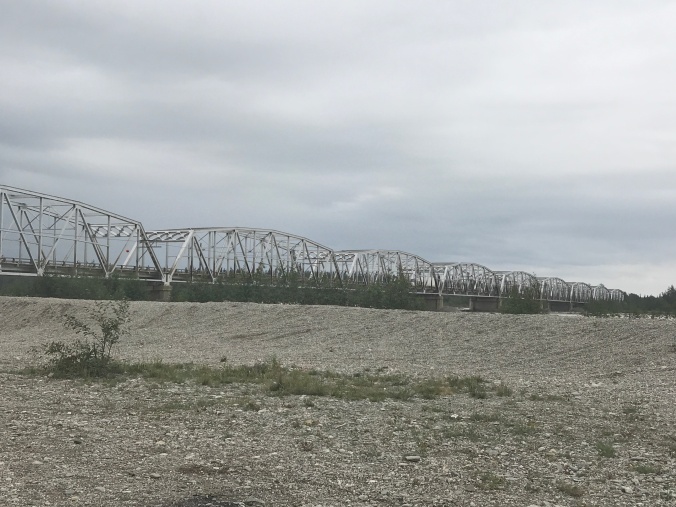
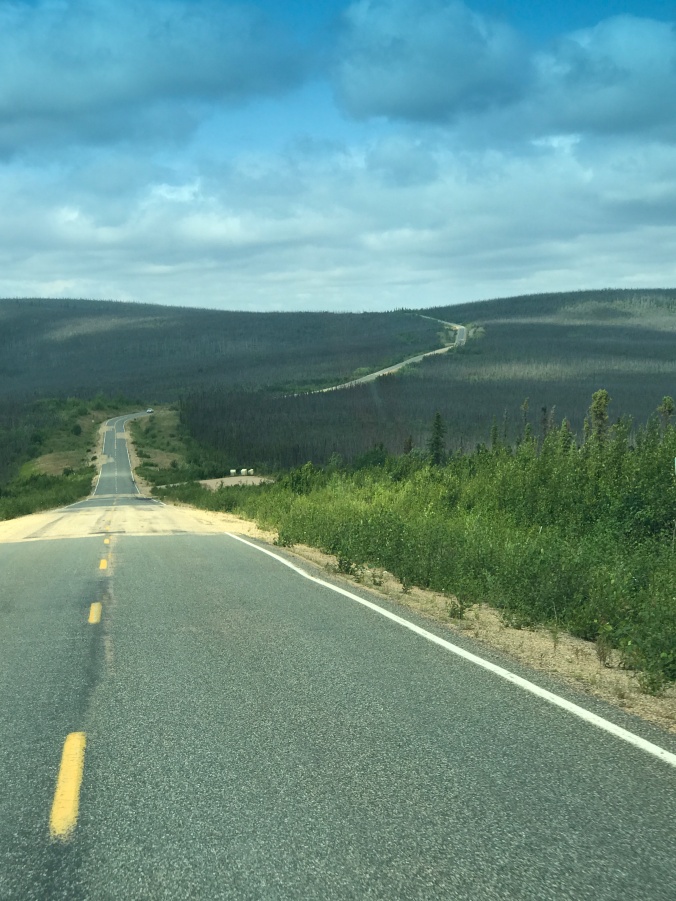




I could NOT believe this. Googling brought the following:
In the late 1800’s, early miners traveled far in search of gold. Food was sometimes scarce, but a particular area near the South Fork of the 40-Mile River was abundant in Ptarmigan, now the state bird which bears a resemblance to a chicken (Ah the foreshadowing is thicker than steel.) The miners kept themselves alive with the help of the Ptarmigan (if you consider being eaten as helping.)
In 1902, Chicken was to become incorporated, the second town in Alaska to do so. The name “Ptarmigan” was suggested. Many people liked the name, but felt the quotation marks were too presumptuous. The name was shortened to Ptarmigan.
The only problem was that nobody could agree on the correct spelling. They didn’t want their town name to be the source of ridicule and laughter, so they decided on “Chicken.”
With a population of 7, goes to 3 in the wintertime, it boasts of one fabulous restaurant that serves the most humongous cinnamon rolls! So much for history–moving along to the Top of the World Highway.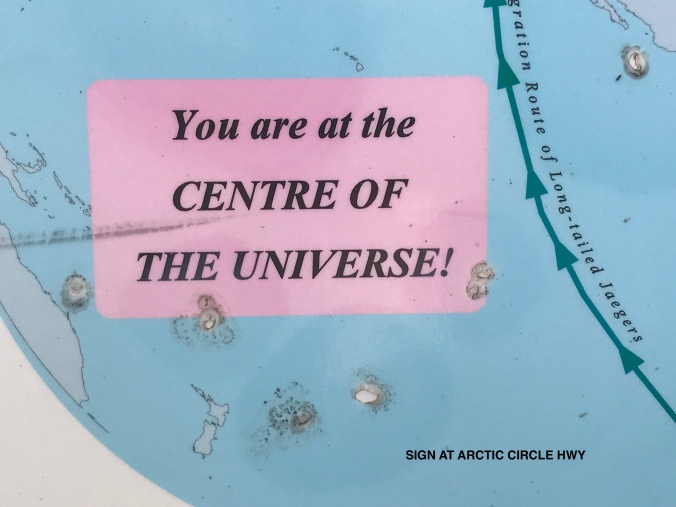 Which of course, we already knew!
Which of course, we already knew!
Crossing into Canada from Alaska, I was on this road–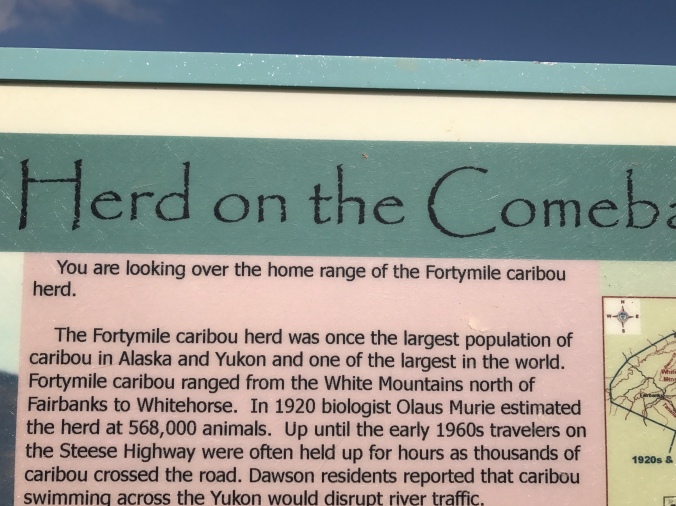



 I was so incredibly lucky to see this heard crossing.
I was so incredibly lucky to see this heard crossing.
Onto Dawson, Dempster Highway and Inuvik, we went – Mabel covered that for us in a previous post because she just couldn’t wait to tell her tale of woe and dirt and dust! 
By now, we have been on the road for almost 10 weeks, and we only touched upon places. It was foolish, no, I think ignorant is a better word, for me to think I could cross Alaska in 6 weeks and see it. Looking back on it, I did a quick whitewash of the drivable areas, but wasn’t able to truly explore certain areas. Another time, don’t you think? I do.
This map doesn’t have the roads on it, but there is not one town that I did not miss except from Fort Good Hope down to Wrigley (that is an ice road) and the towns north of Yellowknife. Locals told me it is much easier to access areas in the winter time because rivers are frozen (-40c), I’ll pass on that, thank you, BUT, when the depth reaches 5 feet worth of frozen water, the rivers are open to vehicles. The roads are kept open in order for supplies to be delivered to these tiny communities.
25% of the Yukon population is made up of the following indigenous people : Kutchin, Hän, Kaska, Tagish, Tutchone and Teslin groups with a total population of of 33,000 people. The Northwest Territories has a population of 41,000 of which 50% is comprised of 8 main aboriginal groups. https://en.wikipedia.org/wiki/Demographics_of_Northwest_Territories
In Fort Resolution, NWT, a Cultural Day was being held by the Deninu Kue First Nation at a restored village, which they had re-built themselves, 1 mile outside of Ft. Res. They had a demonstration of filleting and drying buffalo meat and tried to show me how to do it – I failed miserably! In most of the settlements, there was a school, a college studies building, a Catholic church held over from the 19th and 20th centuries, and a social service building. A strong desire to keep their language and culture alive was a predominant theme in all the villages I visited. Fishing, hunting and berry gathering is mandatory to survive the 9 months of winter. Community gardens dot the towns. Every town had internet and cell phone coverage.
One of the photos below is a wall commemorating all the indigenous people, mostly children, who died in a Flu Epidemic at the Mission School in the late 1800s. The road sign shows the distance between settlements and NO GAS in between.
I won’t go into the plight of the Indigenous People and what happened to them during the 19th and 20th Centuries. Below is a caption from the Canadian Government:
For over a century Aboriginal children were removed from their families and homes, sometimes forcibly, and taken to residential schools where they were housed and educated under the authority of the Government of Canada. The establishment of Indian residential schools began in the 1870s. The Government of Canada was involved in the funding and operation of many of these schools, along with various religious organizations, including the Anglican, Presbyterian, United and Roman Catholic churches. Two primary objectives of the residential schools system were to remove and isolate children from their homes, families, traditions and cultures, and to assimilate them into the dominant culture. In all, some 150,000 First Nations, Inuit and Métis children were removed and separated from their families and communities to attend residential schools. While most Indian residential schools ceased to operate by the mid-1970s, the last federally run school closed in the late 1990s.
On June 11, 2008, Prime Minister Stephen Harper offered an historic Apology to former students of Indian residential schools and their families, and sought forgiveness for the suffering and the long-lasting impact the schools have had on First Nations, Inuit and Métis culture, heritage and language. Alongside the 2008 Apology, the successful ongoing implementation of the Indian Residential Schools Settlement Agreement is a key factor in the Government of Canada’s efforts to forge a new relationship between Aboriginal and non-Aboriginal Canadians.
Read more about Indian Residential Schools.
I currently am in Slave Lake, Alberta, Canada, the 10th largest lake in the world, on my way across the country. The name comes from the Slavey Indians, one of the Athapaskan tribes, in case you were wondering. Yellowknife, NWT and the road down to Alberta has to wait for a few days and we will be caught up.
Alice says, “H! I am still looking at goofy things!”
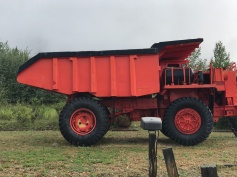
Mabel says, “Thank God we are on decent roads! God Almighty, new meaning to the words shake, rattle and roll. Swear to God, she searched them out. And also glad we are done with the Wood Buffalo Preserve, because someone, whose name I won’t mention, would jump off the passenger seat, go tearing to the back of van to finish looking at each and every one we passed. Someone send her a calm-dog pill.”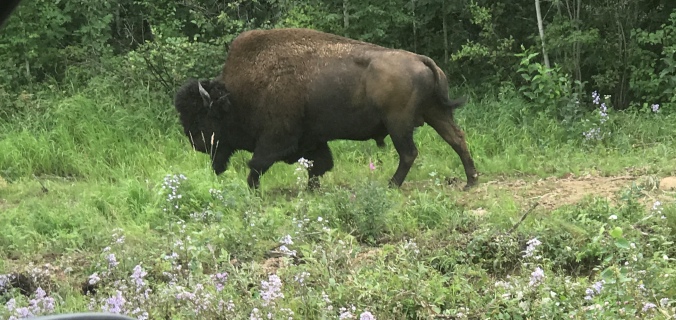
Take good care,
Lisa, Mabel and Alice

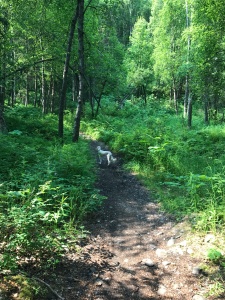



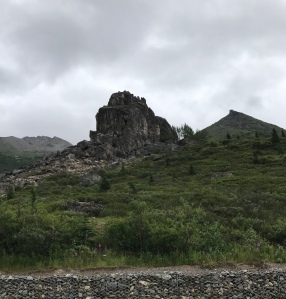




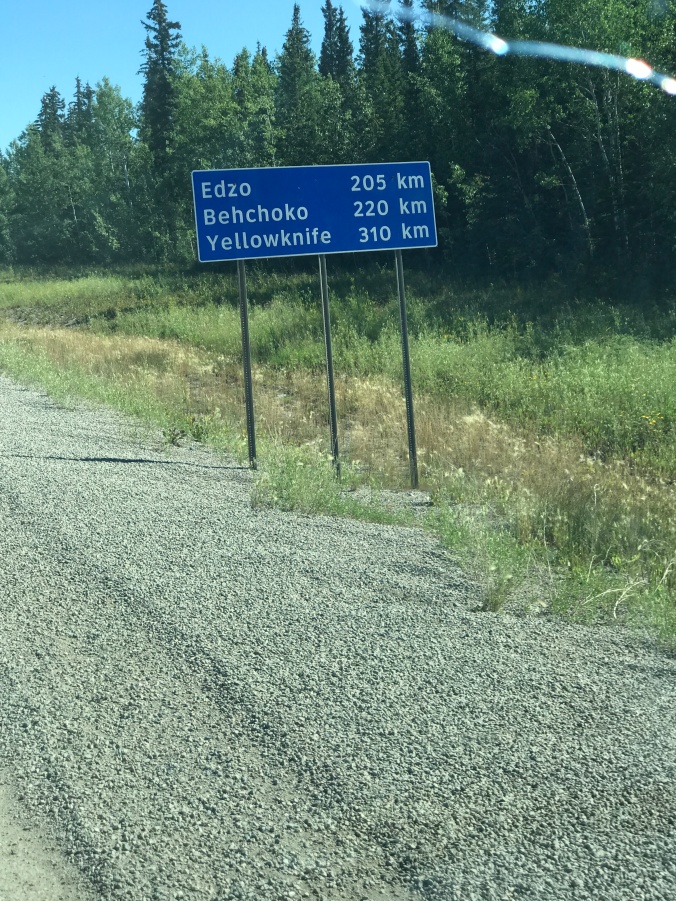
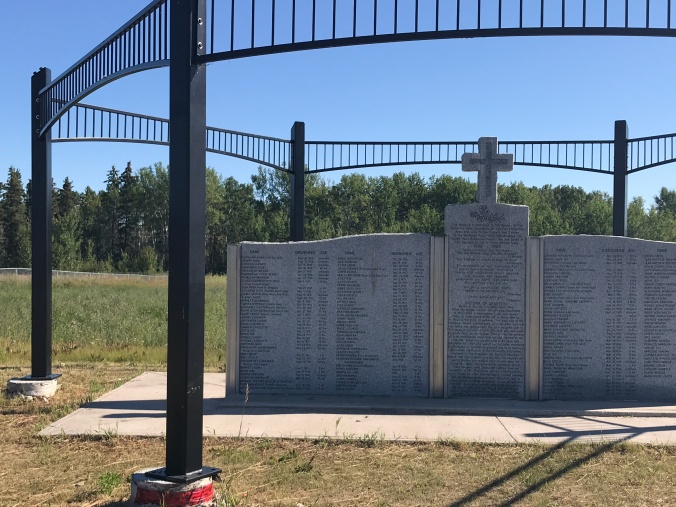
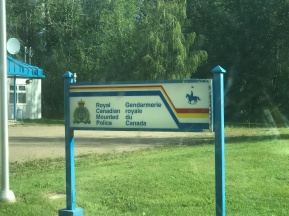
Seriously LOVING your posts Lisa, Alice, and Mabel!
LikeLiked by 1 person
Thanks, Catherine! Hope all is well with you!
LikeLike
Hey, Lisa, I have loved your reports, getting to share a bit in your amazing adventure and hear that you are safe, having such a great trip. Thank you! Things good in Llano, amazing rains of late, blessings. hugs to you and Alice and give your dashboard a pat for us! Blair
Sent from my iPad
>
LikeLiked by 1 person
Thanks so much for sharing your trip . . . I look forward to seeing everything. Be safe. Hugs xx
LikeLiked by 1 person
We too were unable to see Denali due to clouds weather. Did get a peak at it from a distance. Congrats on your journey. Keep on exploring our beautiful planet🌍💗 Joanna
Sent from my iPhone
>
LikeLike
I am so enjoying your posts Lisa. Your photos are lovely and your writing, as
usual, is OUTSTANDING!!!!!!! Continued safe adventures. 👍👍👍😊😊😊❤️❤️❤️
LikeLike
Hey Mary, thanks for following! Currently am in a windshield repair place in Labrador City, Labrador getting a new windshield put in.. mine got totally cracked on this trip and just couldn’t wait any longer. Anyway, Alice will get Amy back in April so she will get a companion soon!! hugs to you and enjoy the remaining days of summer.. hugs, me
LikeLike